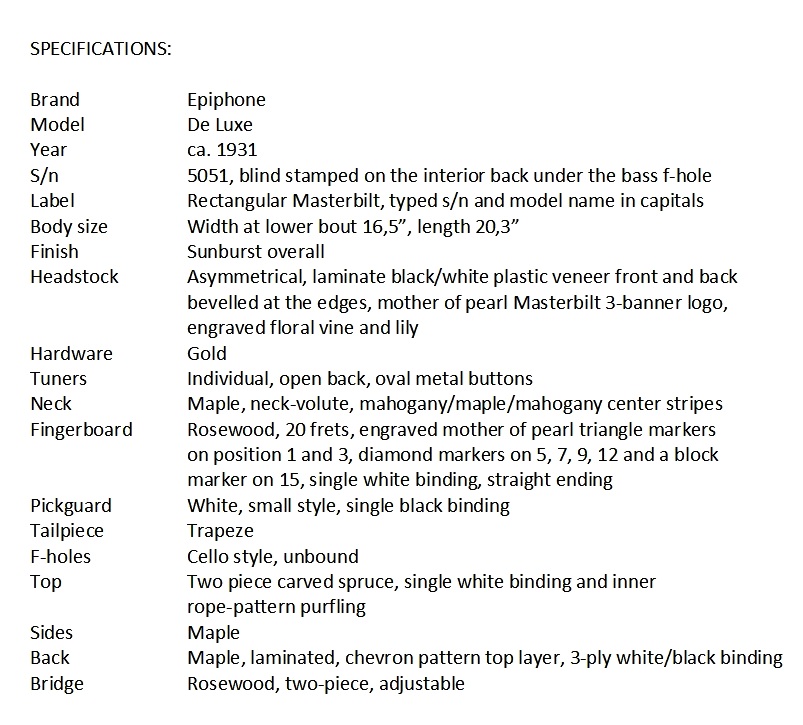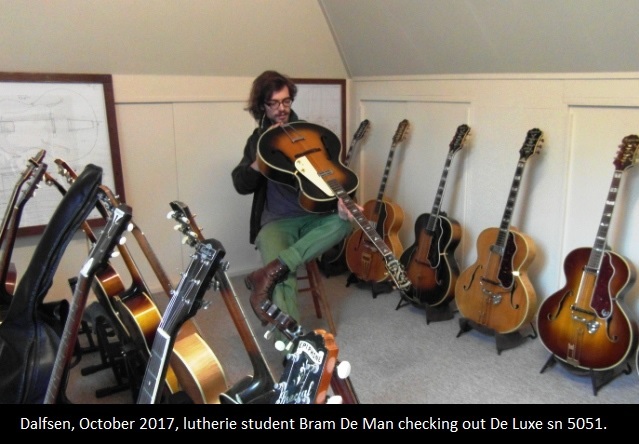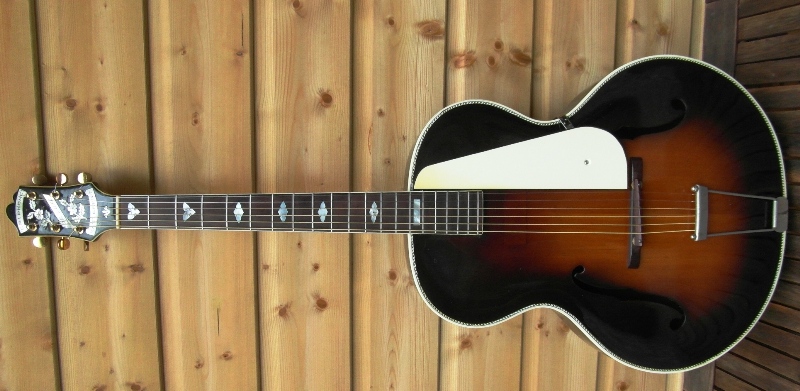
De Luxe s/n 5051 : pictures
The museum purchased the De Luxe s/n 5051 April 2010 on line from Gary’s Classic Guitars, Cincinnati, Ohio. No further history known.
NOTE: The instrument has a bridge with s/n 9579 blind stamped on the underside of the bridgefoot. The bridge once was a part of the Super De Luxe s/n 9579. One wonders whether the original bridge of De Luxe s/n 5051 is still around somewere. If you have any information on the matter, please let us know.
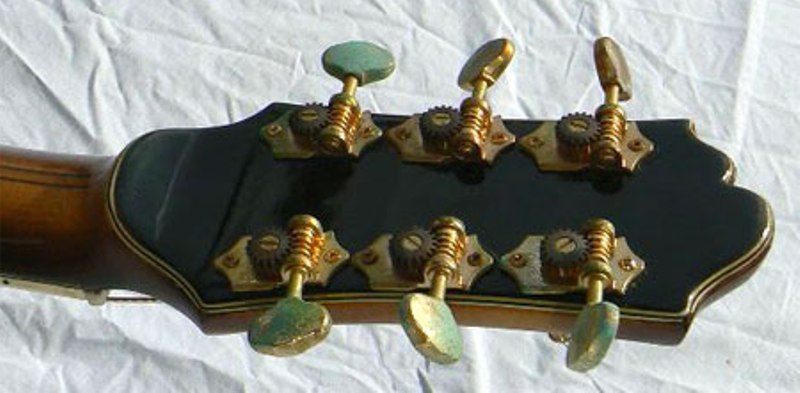
A special feature on the 16 inch De Luxe is the neck-volute. A volute is a carved built up area of the neck to prevent a guitar from breaking at the weak area by the nut, but it can also be merely ornamental. The volute disappeared in 1935 with the introduction of the larger body size.
“The most significant difference between some early models and 1932 versions is rather difficult to spot from outside: The top construction is not carved to an arch (as specified in the 1932 catalog), but bent into an arch by bracing (or flat in some lower-end models). Their distictive “H”-bracing pattern is very different to the parallel tonebars used in carved-top Epiphones (the latter clearly inspired by the tonebars of the early Gibson L-5). Interestingly, numerous higher-end 1931 Masterbilts appear to have been reworked at the Epiphone factory at some point – i.e. upgraded to a carved top –, often evident in a later f-hole shape, label, finish or hardware type.” (Wiedler)
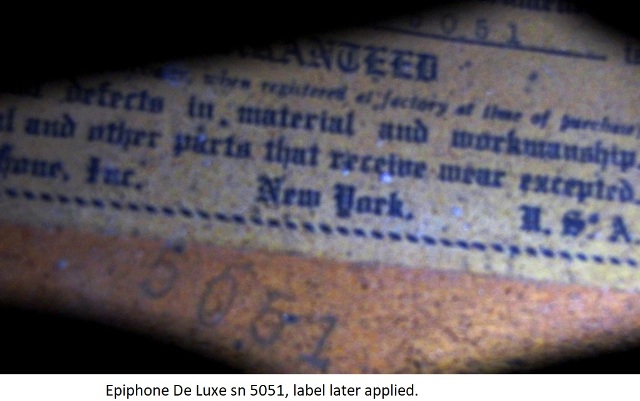
The neck of this very early De Luxe 5051 is more narrow than later examples. Maybe Epiphone wanted to accommodate Banjo players in their switch from banjo to guitar.
